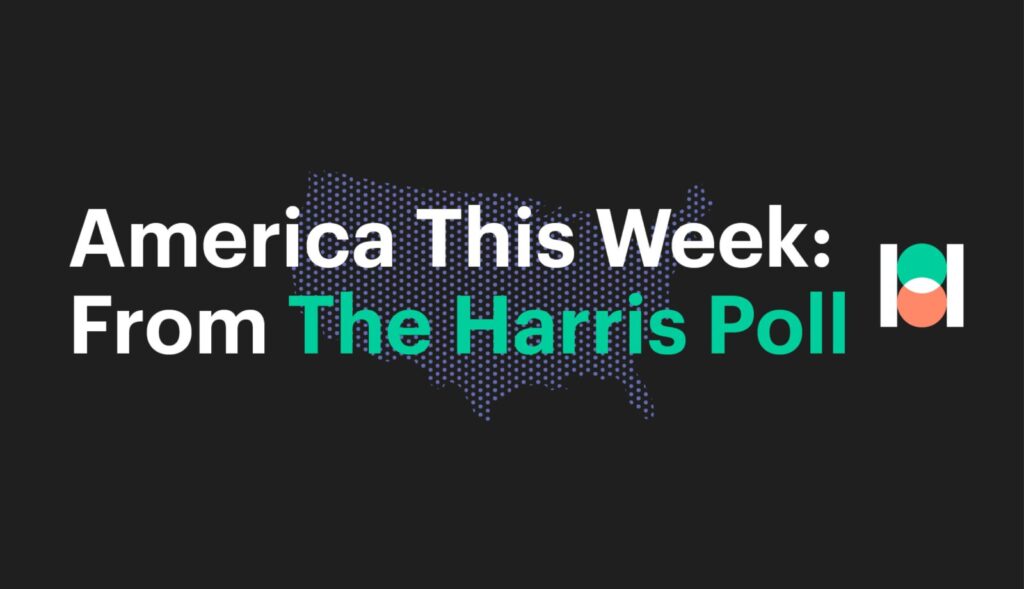Brief • 1 min Read

In late 1980, the Harris Poll surveyed a representative sample of American adults on their attitudes toward gender roles in childcare. Earlier this year, it trended key questions from that study in an online survey. Below are some of the key findings.
Attitudes towards gender roles in childcare have changed since 1980. Parents generally have a more positive opinion of having two working parents in a household.
- Half (53%; down 17 percentage points compared to 1980) of parents with a child under 18 years old and a household size of 2+ agree that when both parents work, children are more likely to get in trouble.
- Four in five (80%; down 3 percentage points from 1980) parents with a child under 18 years old and a household size of 2+ agree that when both parents work, children have to become more self-reliant and independent.
- Nine in ten U.S. adults with a household size of 2+ (88%; up 4 percentage points from 1980) agree that parents should play an equal role in caring for children, even if it means taking some time away from their jobs.
Even with changing social attitudes towards gender roles in childcare, women still have disadvantages when it comes to balancing family responsibilities and a career compared to men.
- Only 28% (down 13 percentage points from 1980) of U.S. adults with a household size of 2+ think the job of homemaking has more advantages than other jobs.
- Three quarters (72%) of U.S. adults agree it’s more difficult for women to get ahead in a career or job because family responsibilities usually fall on them.
- Women agree with this more frequently than men (81% vs. 63% respectively). This trend remains true for working mothers (87%) compared to working fathers (64%).
- Working mothers with a child under 18 years old that require childcare over-index on viewing childcare responsibilities as overwhelming (74%, compared to 49% of working fathers), having trouble finding trustworthy childcare services (76%, compared to 66% of working fathers), and not feeling able to afford adequate childcare (47%, compared to 42% of working fathers).
- Three quarters of fathers with a child under 18 years old that require childcare (72%; compared to just 69% of mothers) think their childcare needs are influential on their partner’s current employment situation (e.g., employment status, employer choice).
Generally, working parents would be more likely to accept an employment offer if the offer included childcare assistance. Working mothers report more frequently than fathers that having childcare available at a job would make them more likely to accept an offer.
- Three quarters (73%) of working parents with a child under 18 years old that require childcare would be more likely to accept a job offer if the employer offered onsite daycare free of charge.
- Working mothers over-index on this (81% vs. 67% of working fathers)
- Half (59%) of working parents with a child under 18 years old that require childcare would be more likely to accept a job offer if the employer offered onsite daycare for a fee.
- Working mothers over-index on this (70% vs. 51% of working fathers)
- Two thirds (68%) of working parents with a child under 18 years old that require childcare would be more likely to accept a job offer if the offer included a monthly childcare stipend (i.e., a monthly allowance to put toward childcare expenses). 71% would be more likely to accept a job offer if the employer offered flexible scheduling (e.g., working hours, location) for parents with childcare needs.
Two surveys were conducted online in the United States by The Harris Poll from February 23, 2024 to February 26, 2024 among 1,092 U.S. adults ages 18+. Figures were weighted where necessary to bring them into line with their actual proportions within the US population. Respondents for this survey were selected from a pool of potential respondents who have agreed to participate in The Harris Poll’s online research.
One survey was conducted via phone interview in the United States by The Harris Poll from November 20th, 1980 to December 11th 1980 among 1,503 U.S. adult family members ages 18+. Figures were weighted where necessary to bring them into line with their actual proportions within the US population in 1980. Respondents were selected via random-digit dialing (RDD) to ensure that the sample includes individuals with unlisted telephones or numbers that were not yet listed.
Subscribe for more Insights
Subscribe to our newsletter for the latest trends in business, politics, culture, and more.
Related Content









